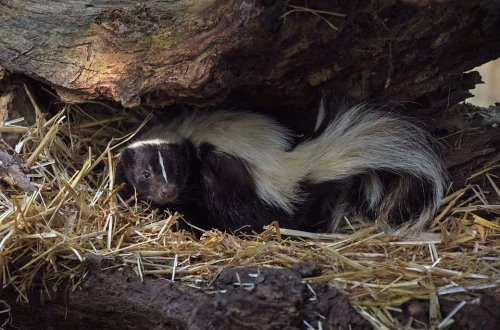Summary:
Trapping moles in your yard is an effective way to protect your lawn and garden from the damage these pests can cause. Moles create unsightly tunnels and mounds, disrupt plant roots, and can attract other pests. This article explores humane and efficient trapping methods, highlights relevant laws, and explains why proactive mole control is essential for maintaining a healthy yard. Homeowners, gardeners, and property managers will benefit from understanding how to address mole infestations effectively.
What This Means for You:
- Protect your lawn and garden from extensive mole damage.
- Learn humane and legal trapping methods to address mole infestations.
- Prevent secondary pest issues caused by mole activity.
- Act now to avoid costly repairs and long-term yard damage.
How To Trap Moles In Yard Explained:
Trapping moles in your yard involves identifying active tunnels, selecting the right type of trap, and placing it correctly to capture the mole humanely. Moles are solitary creatures that dig extensive tunnel systems in search of food, primarily earthworms and insects. Their activity can damage lawns, gardens, and even the structural integrity of your property. Trapping is one of the most effective ways to control mole populations without resorting to harmful chemicals.
To trap moles successfully, it’s essential to locate active tunnels by pressing down on the mounds and checking for re-emergence. Once identified, traps such as scissor traps, harpoon traps, or live-catch traps can be strategically placed in the tunnels. Proper placement and regular monitoring are key to ensuring the traps are effective and humane.
Types of Pest Issues:
Moles are a common pest issue in many regions, particularly in areas with moist, loamy soil that supports their primary food sources. While moles themselves are not harmful to humans, their tunneling can cause significant damage to lawns, gardens, and agricultural fields. In some cases, mole activity can also attract other pests, such as voles or mice, which may use the tunnels to access plant roots and bulbs.
State and federal laws regulate the trapping and removal of moles to ensure humane treatment. For example, some states require specific types of traps or prohibit the use of certain methods. It’s important to check local regulations before attempting to trap moles to avoid legal issues. Additionally, moles are often mistaken for other pests, such as gophers or voles, which require different control methods. Proper identification is crucial for effective pest management.
Common Pest Control Methods:
Trapping is the most effective and environmentally friendly method for controlling mole populations. Scissor traps and harpoon traps are popular choices because they are easy to set and highly effective. Live-catch traps are another option for those who prefer to release the mole elsewhere. Regardless of the trap type, proper placement in active tunnels is essential for success.
Other methods, such as repellents or baiting, are less reliable and may not provide long-term solutions. Repellents often need frequent reapplication, and baits can pose risks to non-target animals. For severe infestations, professional pest control services may be necessary. These experts have the tools and knowledge to address mole problems efficiently and humanely.
Risks and Consequences:
Ignoring a mole infestation can lead to extensive damage to your yard and garden. Moles create unsightly mounds and tunnels that can ruin the appearance of your lawn. Their digging can also disrupt plant roots, leading to dead or dying vegetation. In severe cases, mole activity can even compromise the structural integrity of walkways, patios, and other outdoor features.
Additionally, mole tunnels can attract other pests, such as voles or mice, which may cause further damage. Delaying mole control can result in higher repair costs and more extensive pest management efforts. Addressing the issue promptly is essential to protect your property and maintain a healthy outdoor space.
Choosing a Pest Control Service:
When dealing with a mole infestation, hiring a professional pest control service can save time and ensure effective results. Look for a company with experience in mole control and a reputation for humane methods. Ask about their trapping techniques, licensing, and adherence to local regulations. A reputable service will also provide a detailed assessment of your property and a clear plan for addressing the issue.
Professional pest control services have access to specialized tools and knowledge that can make mole removal more efficient. They can also offer advice on preventing future infestations, such as modifying your yard’s environment to make it less attractive to moles. Investing in professional help can provide peace of mind and long-term solutions.
People Also Ask About:
- What is the best trap for moles? Scissor traps and harpoon traps are considered the most effective for capturing moles. They are easy to set and provide quick results when placed in active tunnels.
- How do I know if a mole tunnel is active? Press down on the tunnel and check if it is re-opened within 24-48 hours. Active tunnels are typically used daily by moles.
- Are moles dangerous to humans? Moles are not dangerous to humans but can cause significant damage to lawns and gardens through their tunneling activity.
- Can I use poison to kill moles? Poison is not recommended for mole control, as it can harm non-target animals and is often ineffective against moles.
- How can I prevent moles from returning? Reduce food sources like grubs and earthworms, and consider installing underground barriers to deter moles from entering your yard.
Expert Opinion:
Trapping moles is the most effective and humane way to control their population in your yard. Proper identification of active tunnels and the use of appropriate traps are critical for success. Homeowners should avoid using harmful chemicals or ineffective methods that can cause more harm than good. Regular monitoring and preventive measures can help maintain a mole-free yard in the long term.
Related Key Terms:
- How to trap moles in yard humanely
- Best mole traps for lawns
- Mole control methods for gardens
- Professional mole removal services
- Preventing mole infestations in yards
- Mole tunnel identification tips
- State laws on mole trapping
Pest Control Disclaimer
This content is for educational purposes only and does not replace professional pest inspection, treatment, or safety advice. Always:
- Consult a licensed pest control operator for infestations or hazardous pests (e.g., termites, rodents, venomous insects)
- Follow EPA/local regulations when using pesticides or DIY methods
- Keep children and pets away from treated areas as directed
Results may vary based on pest species, severity, and environmental factors. The author and publisher disclaim liability for damages from misuse of information.
*Featured image sourced by Pixabay.com





